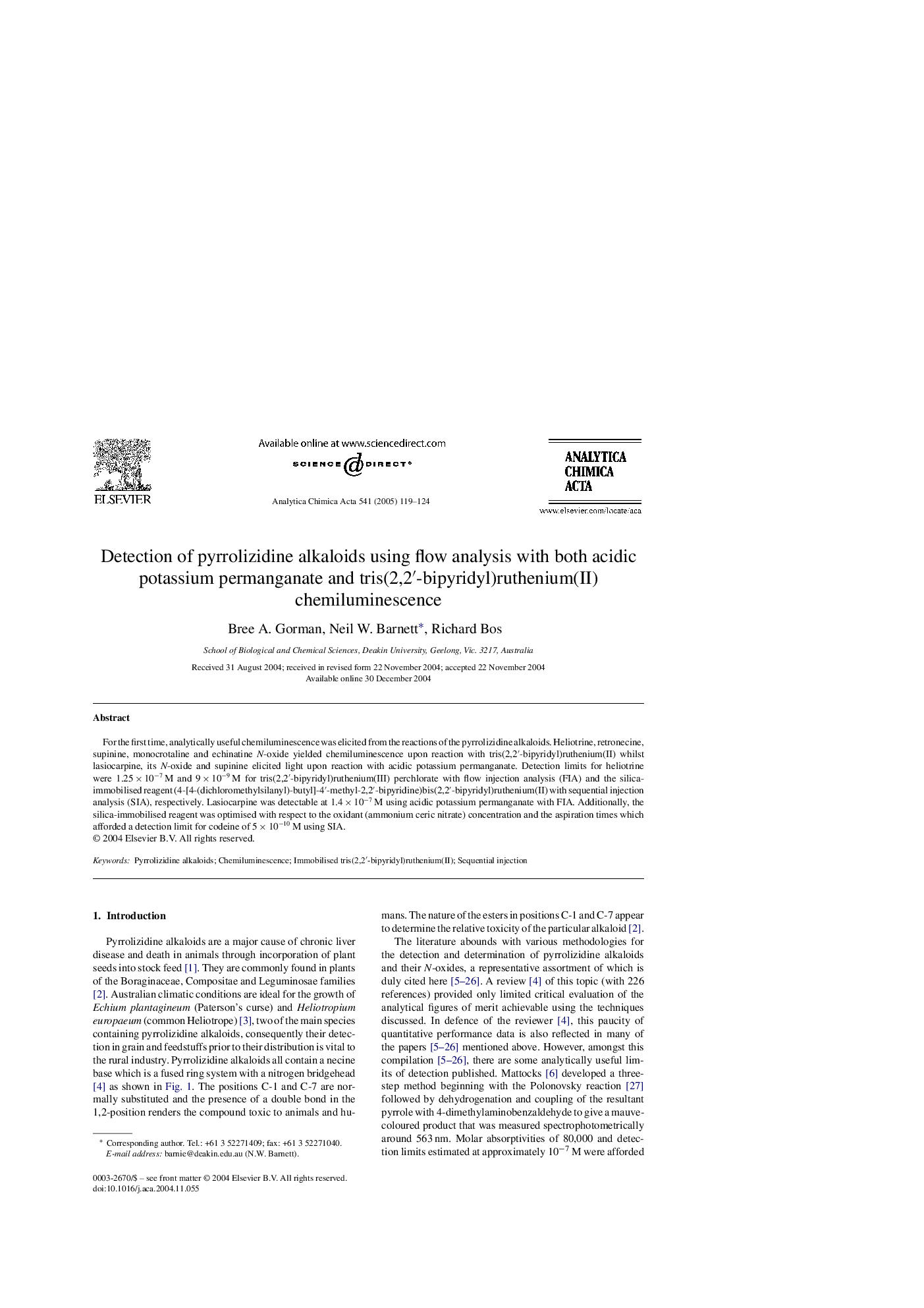| Article ID | Journal | Published Year | Pages | File Type |
|---|---|---|---|---|
| 9743613 | Analytica Chimica Acta | 2005 | 6 Pages |
Abstract
For the first time, analytically useful chemiluminescence was elicited from the reactions of the pyrrolizidine alkaloids. Heliotrine, retronecine, supinine, monocrotaline and echinatine N-oxide yielded chemiluminescence upon reaction with tris(2,2â²-bipyridyl)ruthenium(II) whilst lasiocarpine, its N-oxide and supinine elicited light upon reaction with acidic potassium permanganate. Detection limits for heliotrine were 1.25Â ÃÂ 10â7Â M and 9Â ÃÂ 10â9Â M for tris(2,2â²-bipyridyl)ruthenium(III) perchlorate with flow injection analysis (FIA) and the silica-immobilised reagent (4-[4-(dichloromethylsilanyl)-butyl]-4â²-methyl-2,2â²-bipyridine)bis(2,2â²-bipyridyl)ruthenium(II) with sequential injection analysis (SIA), respectively. Lasiocarpine was detectable at 1.4Â ÃÂ 10â7Â M using acidic potassium permanganate with FIA. Additionally, the silica-immobilised reagent was optimised with respect to the oxidant (ammonium ceric nitrate) concentration and the aspiration times which afforded a detection limit for codeine of 5Â ÃÂ 10â10Â M using SIA.
Related Topics
Physical Sciences and Engineering
Chemistry
Analytical Chemistry
Authors
Bree A. Gorman, Neil W. Barnett, Richard Bos,
